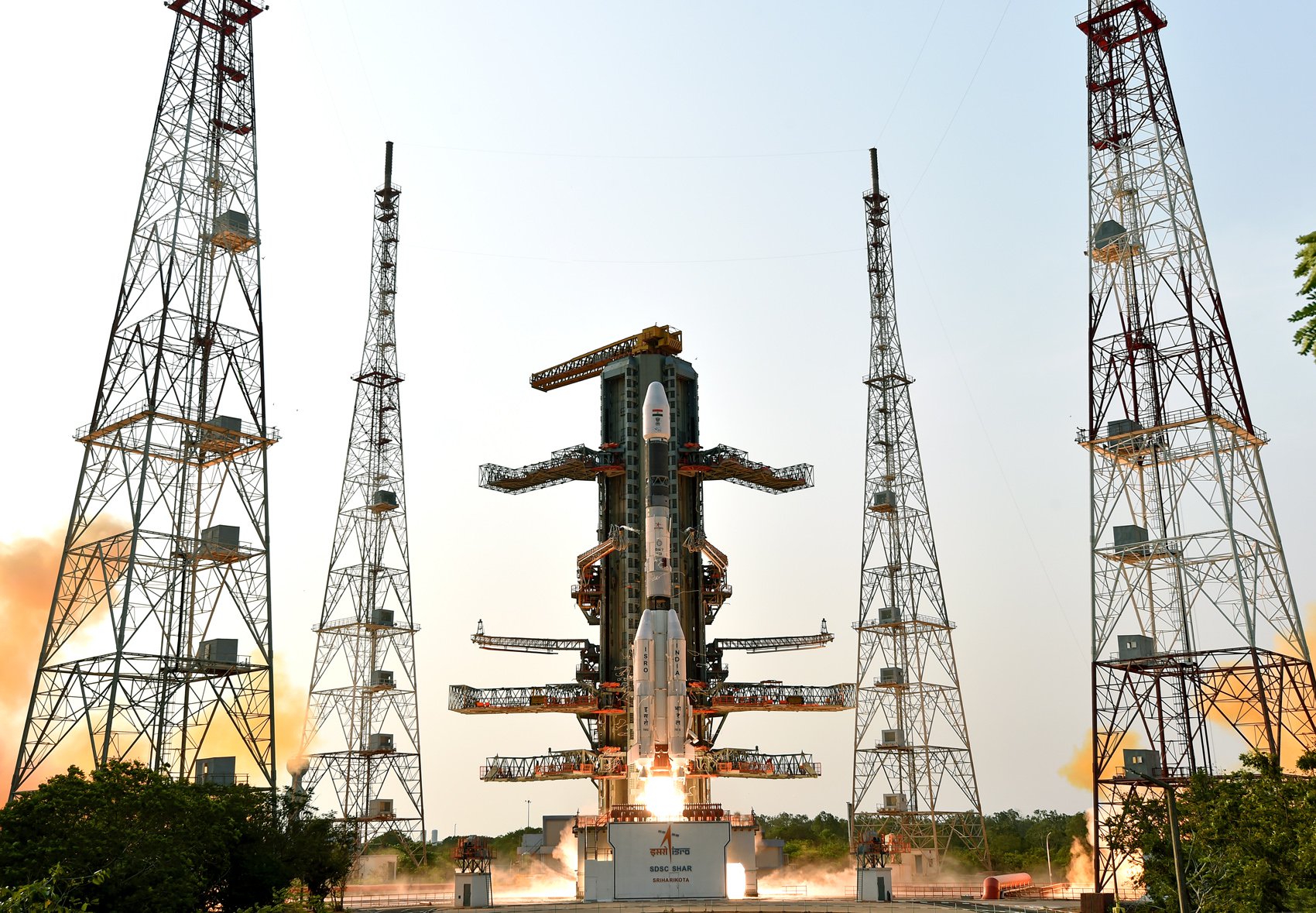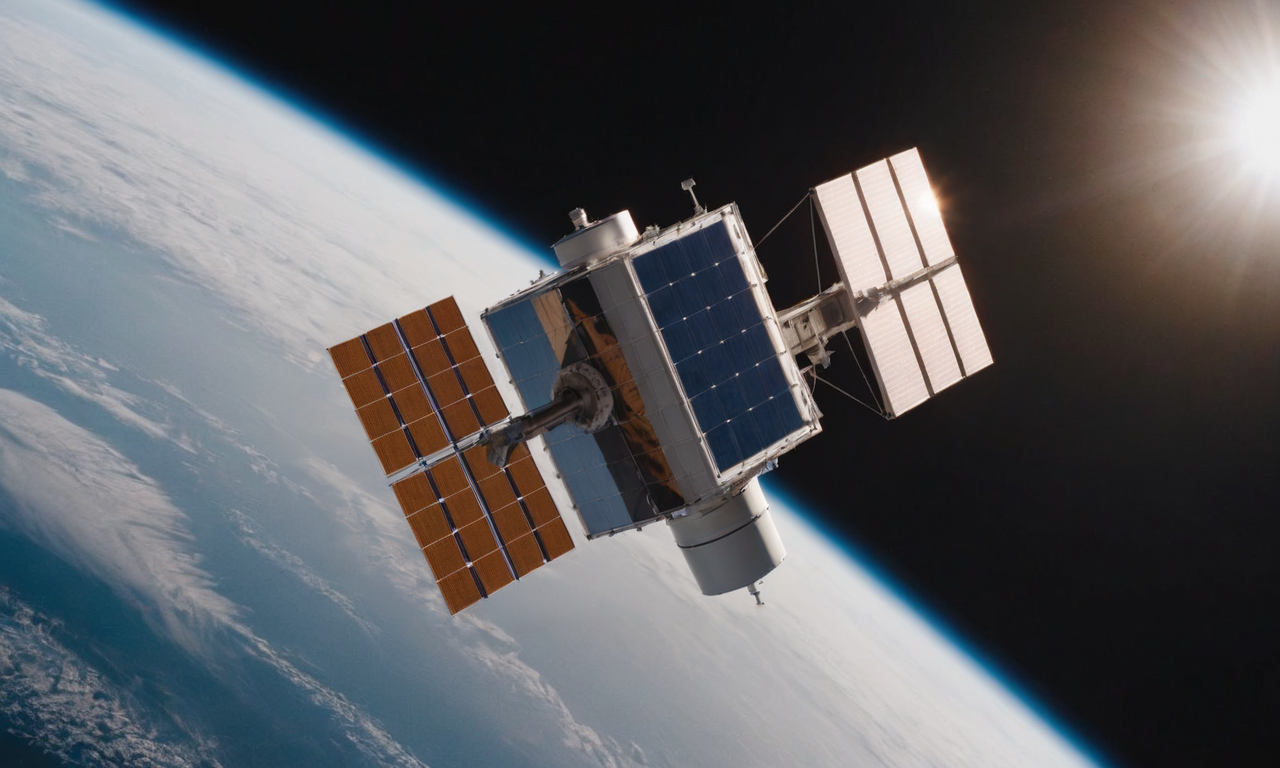· space brief · 7 min read
Space Brief 4 Jun 2025
Key developments include China's Shijian 26 satellite launch, U.S. Space Force's BAE Systems contract for missile-tracking satellites, and military advancements in space systems.

📄Top Stories
China successfully launched its Shijian 26 remote-sensing satellite into orbit, marking the country’s 33rd rocket mission of 2025. Meanwhile, the U.S. Space Force has awarded BAE Systems a substantial contract to develop missile-tracking satellites, broadening its medium Earth orbit capabilities. These advancements highlight the intensifying global focus on satellite technology for national and international security.
📰Detailed Coverage
China Launches Shijian 26 Satellite
China continues to expand its remote-sensing capabilities with the successful launch of the Shijian 26 satellite. Deployed via a Long March 4B rocket, the satellite reached its sun-synchronous orbit, enhancing China’s earth observation assets. The mission underscores China’s ambition and growing influence in space exploration and satellite technology.
Technical analysis suggests that the Shijian 26 will offer advanced capabilities for land and coastal monitoring, contributing significantly to environmental and security surveillance. The satellite’s operational orbit allows for repetitive coverage, making it a valuable asset for continuous earth observation efforts.
Read the full story: Space Daily
U.S. Space Force Strengthens Missile-Tracking with BAE Systems
In a strategic move to counter emerging threats, the U.S. Space Force has awarded a $1.2 billion contract to BAE Systems for the development of missile-tracking satellites. The initiative will bolster the Space Force’s medium Earth orbit (MEO) constellation to enhance global missile detection and tracking.
These new satellites are integral to maintaining technological superiority and response capabilities against hypersonic threats. Integrating them into existing systems will improve detection and provide a comprehensive strategy in missile defense. Our web app can help users stay updated on such satellite deployments and movements.
Read the full story: SpaceNews
BAE Set to Expand MEO Satellite Constellation
Continuing with developments from the Space Force, BAE’s contract includes plans to extend its missile warning capabilities within the medium Earth orbit (MEO). This expansion is part of a broader goal to create a resilient and responsive space-based infrastructure for national security.
Technical specifications hint at advanced sensor payloads and enhanced data processing capabilities that will feed into real-time threat analysis systems. As this project progresses, tracking these satellites will be crucial for understanding shifts in defense strategies and technological capabilities.
Read the full story: Breaking Defense
Army Modernizes Helo Pilot Training
The U.S. Army is set to upgrade helicopter pilot training through the Flight School Next program, investing in new aircraft and simulation technologies. This effort aims to enhance pilot proficiency and cyber-integration skills, ensuring readiness across modern combat scenarios.
The program’s integration of simulation technologies parallels advancements in space-based training systems, highlighting the intersection between aviation and satellite technologies in military applications. Such training enhancements are crucial for maintaining tactical advantages in rapidly evolving environments.
Read the full story: Breaking Defense
Leadership Changes in Defense Procurement
Michael Duffey has been confirmed as the Pentagon’s chief weapons buyer, a pivotal role affecting defense spending and strategic procurement decisions. With a substantial background in budget management and prior Pentagon experience, Duffey’s leadership is expected to influence future acquisitions and investments in space and defense technologies.
These shifts in leadership can potentially accelerate or redirect the focus on satellite and space assets as pivotal components of national defense infrastructure. Keeping track of procurement trends will provide insight into future space and satellite initiatives.
Read the full story: Breaking Defense
🛰️Satellite Spotlight
- Satellite Name: NEOSSAT
- NORAD ID: 39089
- Launch Date: February 25, 2013
- Mission: NEOSSAT is designed for astronomy, specifically focusing on Near-Earth Object (NEO) detection and characterization.
- Orbit: Low Earth Orbit (LEO)
- Operator: Canadian Space Agency (CSA)
- Fun Fact: NEOSSAT is notable for being the world’s first satellite dedicated to searching for and tracking near-Earth asteroids and comets.
Track this satellite in real-time on our web app: Track NEOSSAT
🌌Space Weather
Current space weather shows Enhanced solar wind (559 km/s).
R0 - S0 - G0
Next 24 Hours: During the next 24 hours, there is no risk of radio blackouts or solar radiation storms. Satellite operators can expect the geomagnetic conditions to remain stable, with no G1 (Minor) geomagnetic storms anticipated. As the influences from the recent Coronal Mass Ejection (CME) are expected to fade, transitioning back to a Coronal Hole High-Speed Stream (CH HSS) regime, G1 storm levels may be possible again on 5 June. Meanwhile, communication users can remain confident as no S1 (Minor) or greater solar radiation storms are forecasted.
Beyond: From 02 June to 28 June 2025, solar activity is expected to rise to moderate levels (R1-R2/Minor-Moderate) with a possibility of R3 (Strong) events, particularly as Region 4100 approaches the western limb. Satellite operators should brace for potential M-class (R1-R2) X-ray activity throughout this period due to multiple active regions on the solar disk, including some returning from the far side of the Sun. The ongoing proton event is projected to conclude on 02 June, with no additional events expected at geosynchronous orbit.
The greater than 2 MeV electron flux at geosynchronous orbit is likely to reach high levels on several occasions in June due to the influence of recurrent coronal holes. The geomagnetic activity is expected to fluctuate between G1 (Minor) to G2 (Moderate) storms, particularly on 02-03 June due to declining CME effects. Unsettled to active conditions are likely on 04-07 and 10-12 June, while unsettled to G1 (Minor) conditions may prevail from 13-22 June and again later from 23-28 June due to the ongoing influence of negative polarity CH HSS. Satellite operators should monitor these conditions closely to mitigate drag impacts on Low Earth Orbit (LEO) satellites and ensure continued operational integrity for ground-based radars and telescopes.
🚀 Upcoming Space Launches
June 4
- SpaceX Falcon 9:
- Starlink Group 11-22 from Vandenberg Space Force Base, CA, USA (23:28 UTC) A batch of 27 satellites for the Starlink mega-constellation - SpaceX’s project for space-based Internet communication system.
June 5
- China Aerospace Science and Technology Corporation Long March 6A:
- G60 Polar Group TBD from Taiyuan Satellite Launch Center, People’s Republic of China (20:36 UTC) 18 Low Earth Orbit communication satellites for the G60 constellation operated by Shanghai Spacecom Satellite Technology.
June 7
- SpaceX Falcon 9:
- Sirius SXM-10 from Cape Canaveral Space Force Station, FL, USA (03:19 UTC) SXM-10 is a high-powered digital audio radio satellite for SiriusXM.
June 8
- SpaceX Falcon 9:
- Starlink Group 15-8 from Vandenberg Space Force Base, CA, USA (13:34 UTC) A batch of satellites for the Starlink mega-constellation - SpaceX’s project for space-based Internet communication system.
June 10
- SpaceX Falcon 9:
- Axiom Space Mission 4 from Kennedy Space Center, FL, USA (12:22 UTC) This is a Crew Dragon flight for Axiom Space with three private astronauts to the International Space Station.
- SpaceX Falcon 9:
- Starlink Group 12-24 from Cape Canaveral Space Force Station, FL, USA (13:03 UTC) A batch of satellites for the Starlink mega-constellation - SpaceX’s project for space-based Internet communication system.
- Rocket Lab Electron:
- The Mountain God Guards (iQPS Launch 3) from Rocket Lab Launch Complex 1, Mahia Peninsula, New Zealand (15:45 UTC) A synthetic aperture radar Earth observation satellite for Japanese company iQPS.
June 13
- SpaceX Falcon 9:
- Starlink Group 15-6 from Vandenberg Space Force Base, CA, USA (01:46 UTC) A batch of satellites for the Starlink mega-constellation - SpaceX’s project for space-based Internet communication system.
- United Launch Alliance Atlas V 551:
- Project Kuiper (KA-02) from Cape Canaveral Space Force Station, FL, USA (18:29 UTC) Project Kuiper is a mega constellation of satellites in Low Earth Orbit aiming to offer broadband internet access.
June 18
- Indian Space Research Organization GSLV Mk II:
- NISAR (NASA-ISRO Synthetic Aperture Radar) from Satish Dhawan Space Centre, India (11:30 UTC) NISAR will map Earth’s land and ice masses to observe natural processes and hazards.
Note: Launch dates and times are subject to change due to technical or weather considerations.

Maurice Stellarski





